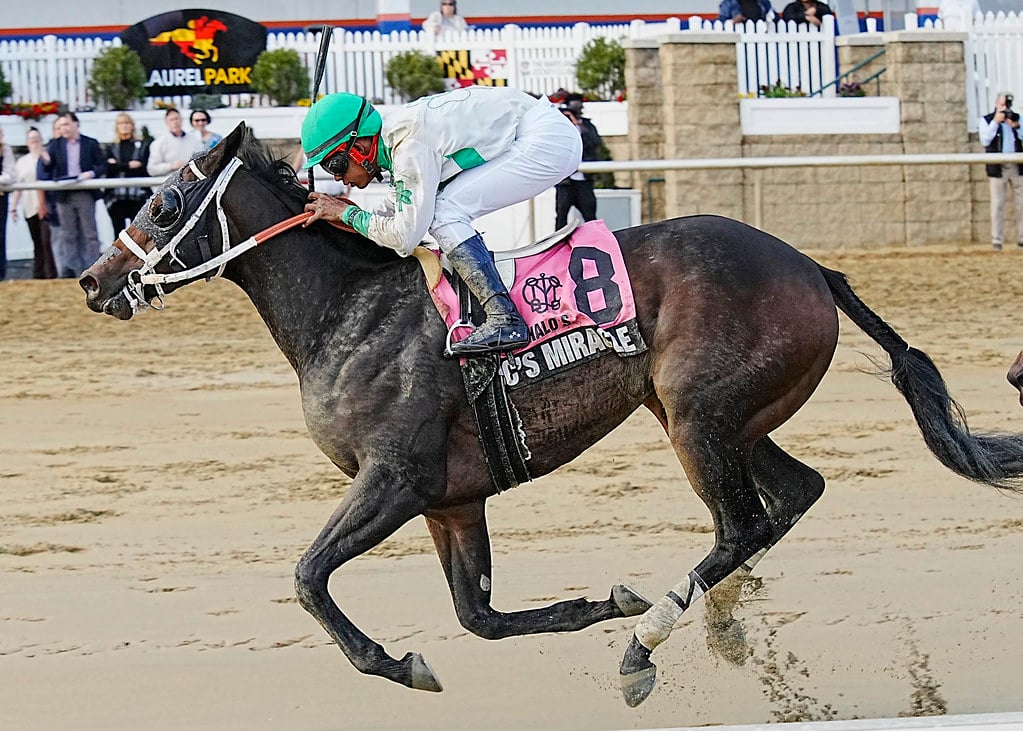LASIX BAN LIKELY RESULT OF MCCONNELL BILL

Coming soon to a racetrack near you: a federal prohibition on raceday Lasix use. That’s perhaps an exaggeration – but likely only a slight one.
The sprawling legislation introduced September 9 by Senator Mitch McConnell (R-KY), S. 4547, the Horseracing Integrity and Safety Act of 2020, is widely expected to pass during the current Congress. Once McConnell, the Senate Majority Leader, signed onto the cause of federal intervention, it broke a logjam that had persisted for years.
The bill, which in some respects is a compromise version of earlier bills, is also broader in subject matter. It would create a “Horseracing Integrity and Safety Authority” that would be funded by the Thoroughbred industry and focused on two broad areas: anti-doping and medication control on the one hand, and racetrack safety on the other.
It would be governed by nine-member board of directors, five of whom must be “independent” and selected from outside the Thoroughbred industry. Two standing committees – one focused on each of the Authority’s two major focus areas – would support the board.
While the bill has the support of many racing entities – among them, Breeders’ Cup Ltd., The Jockey Club, and the National Thoroughbred Racing Association – many rank-and-file horsemen oppose it, as does the National Horsemen’s Benevolent and Protective Association (HBPA).
That’s because of the issue of raceday Lasix.
And while the bill is, in the immediate term, a step away from earlier legislation that enacted a ban on Lasix and all other medications on raceday, in the longer term it will almost certainly have the same effect.
In general, McConnell’s legislation prohibits the administration of any medication to horses within 48 hours of a race.
- Just Philtored sharp in Md. Juvenile Filly
 Just Philtored all but sewed up champion Md-bred 2yo filly honors in the Juvenile Filly, while Code of Silence was up late to prevail in the Md. Juvenile.
Just Philtored all but sewed up champion Md-bred 2yo filly honors in the Juvenile Filly, while Code of Silence was up late to prevail in the Md. Juvenile.
However, its approach to furosemide – Lasix – is much more complicated, though ultimately it will almost certainly arrive at the same place.
Lasix is included in the general medication ban, but for a three-year period, state Racing Commissions can apply for exemptions to allow the anti-bleeder medication. Those exemptions cannot apply to two-year-olds or horses running in stakes races – Lasix would be banned for these regardless – but the new Authority is generally otherwise required to grant the exemptions for the three-year period.
During that period, the Authority is directed to convene an advisory panel “comprised of horseracing anti-doping and medication control industry experts” to study raceday furosemide, including its impacts on equine health and the integrity of the competition.
That group is directed to submit a report to the Authority and to make any recommendations it thinks advisable for altering the prohibition. If it makes none, at the end of the three-year period the exemptions will expire, and Lasix will join other medications on the sidelines within 48 hours of races.
And if it recommends changes?
They will almost certainly not be adopted.
That’s because the legislation creates a process that a suspicious mind might think was designed to ensure no change is enacted.
If, after receiving the furosemide report, members of the Authority want to enact more permissive Lasix rules, the legislation requires a unanimous vote of the board to do so. What’s more, the board must also unanimously adopt each of four findings:
- That the change is “warranted”;
- That it would be in the “best interests of horse racing”;
- That furosemide “has no performance enhancing effect on individual horses”; and
- That the change would have no adverse impact on “public confidence in the integrity and safety of racing.”
- CT: Juvenile winners connect Sigler, Farrior barns
 Maskedandmummed swept two November stakes at Charles Town, and a pair of other juveniles impressed in graduating in the muddled 2yo scene there.
Maskedandmummed swept two November stakes at Charles Town, and a pair of other juveniles impressed in graduating in the muddled 2yo scene there.
Since the issue of raceday Lasix has been among the most contentious throughout the legislative process, the chances of all nine members of the panel agreeing to permit it appear remote. That’s likely true even were scientific evidence to stack up on the side of the drug’s use.
The overwhelming majority of American racehorses run on furosemide, and many horsemen contend that it is beneficial to their charges.
“Science and national veterinary leadership continue to support the administration of Lasix on race-day,” the HBPA argued in its statement opposing the proposed legislation.
But some breeders and others say that its use puts us out of step with the rest of the world – most racing nations do not permit Lasix use – and has detrimental effects on the breed and on public confidence in the sport.
These arguments – pro and con – may not have changed many minds in the industry, but right now, McConnell’s legislative solution looks to have all the momentum.
LATEST NEWS
- Just Philtored sharp in Md. Juvenile Filly

- Charles Town picks and analysis: December 6, 2025

- Laurel Park picks and ponderings: December 6, 2025

- LRL: Tartabull seeks next step in Md. Juvenile

- Slewperstitus, Doc’s Miracle meet again in Md. Juvenile Filly

- Jumping the Gun could give Simoff first graded win
















Anonymous
18th Sep 20205